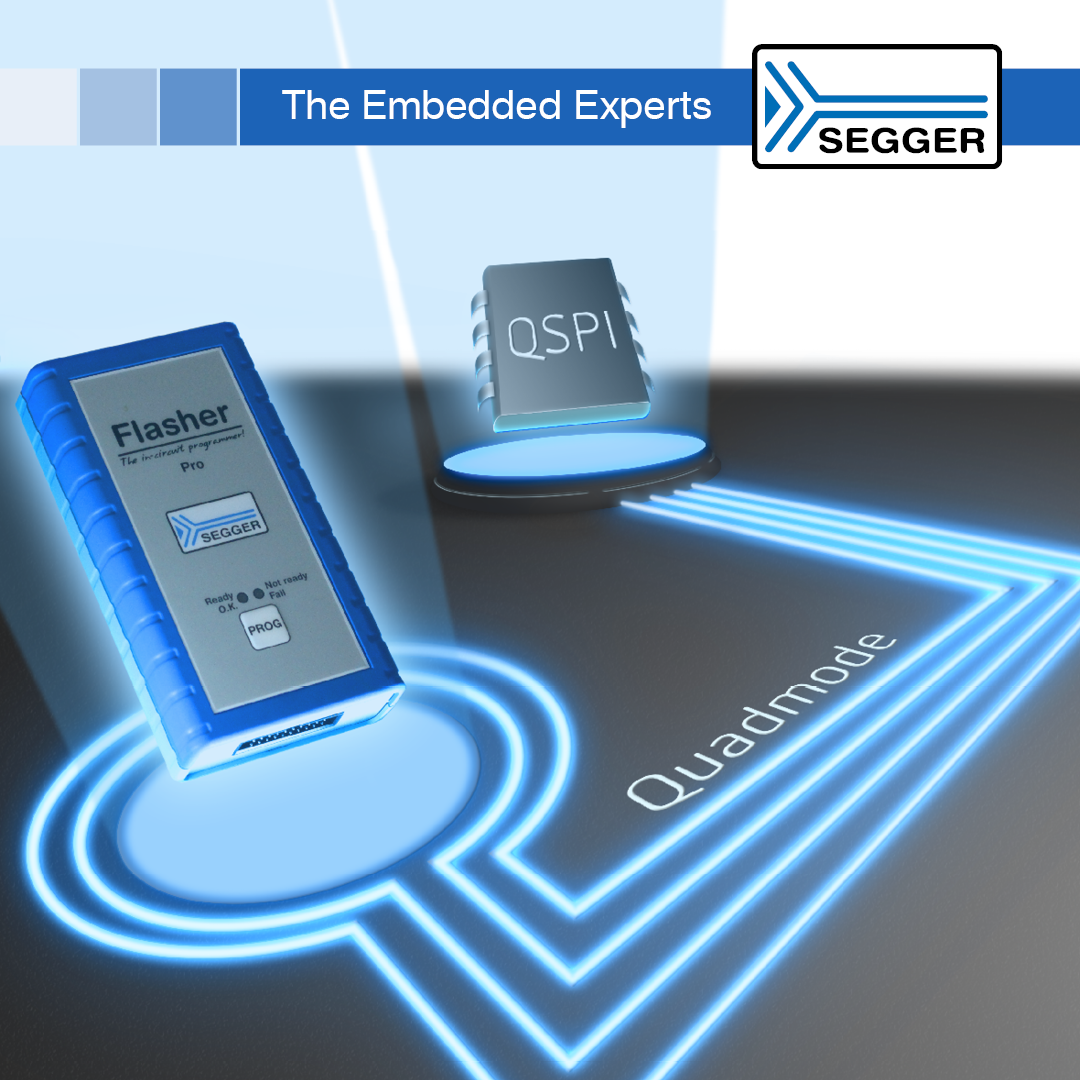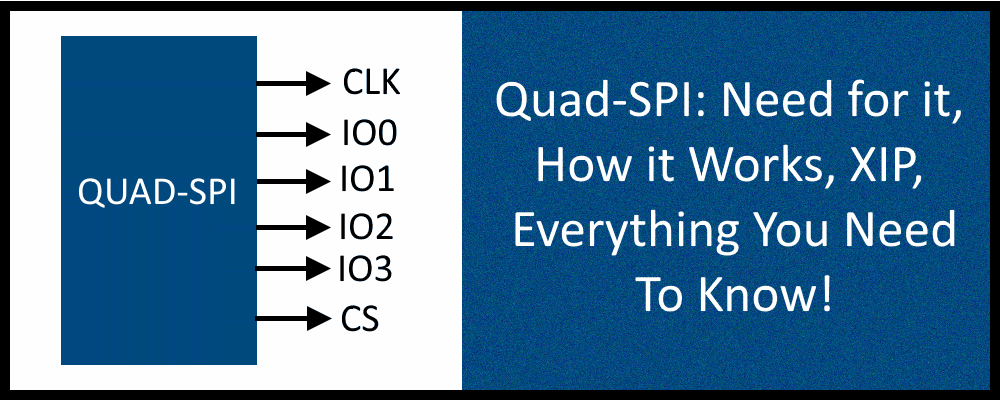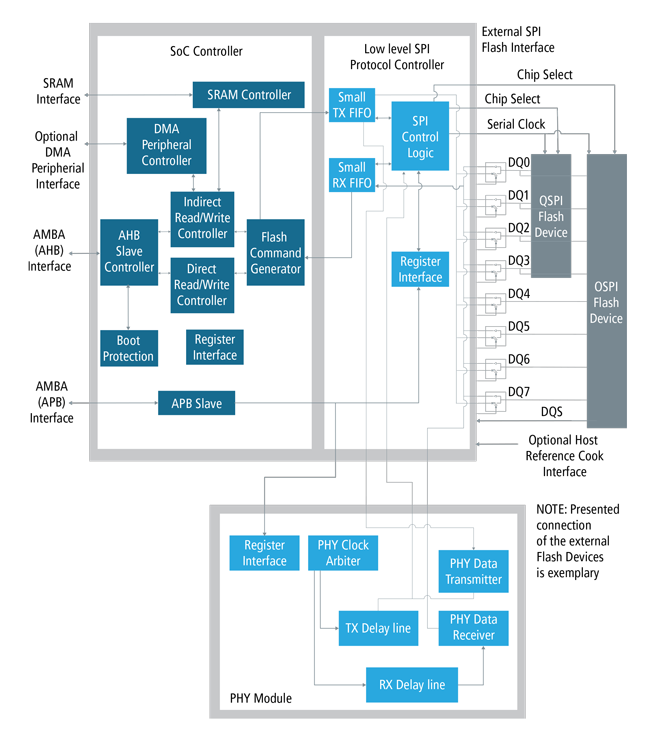

SPI can adopt single-master and multi-master protocols but the multi-master bus is rarely used, and are usually limited to a single slave.
#Qspi controller full#
This SPI Bus its operates at full duplex meaning, signal carrying data can go back and forth in any direction simultaneously, a synchronous type of data setup MASTER / SLAVE interface, SPI also support up to 1 magaboud or 10Mbps of speed. Even it is develop primarily for the communication between Server/Host processor and peripherals, a connection of two processor via SPI it will go well smoothly.
#Qspi controller serial#
The SPI Bus is a 4 wire serial communication interface used by many microprocessors and micro controller chip to enables the controllers and peripheral devices to communicate the two devices. SPI is a hardware / firmware communication protocol or sometimes Engineers called it a “four wire serial bus” communication. If you fail to enable the User mode SPI support then the SPI device files will not be created.Įdit the file subsystems/linux/configs/device-tree/system-top.dts in your PetaLinux project directory, then add the following lines.The SPI(Serial to Peripheral Interface) develop by Motorola and later adopted by Microwire of National Semiconductor and other companies.
#Qspi controller driver#
Navigate to Device Drivers-> SPI support and make sure that Cadence SPI controller, Xilinx SPI controller command module, Xilinx Zynq QSPI controller, and User mode SPI device driver support are all enabled. To configure the kernel run the following command. Then you need to enable SPI support for your kernel. The first step after creating your project is to use petalinux-config to read the hardware description that you exported from Vivado. This step is critical: without it, Linux won’t create the SPI device file to control your device. Before you build PetaLinux, though, you need to modify the device tree to create the appropriate device file for your SPI device. You need to create a PetaLinux project and extract the hardware description from your project SDK directory as discussed in tutorial 23. These steps are covered in other tutorials, so I won’t go into details here.

Generate a bitstream and export your design to SDK. Now synthesize the design and use the I/O Planner to place the outputs where you want on your FPGA.
#Qspi controller software#
This can be really useful for debugging your software using the embedded logic analyzer feature of Vivado. Note that I have also marked the pins for debug. Don’t worry about not having those in your design. On my FPGA, I also connect to a DS3231 realtime clock over I2C and have some GPIOs connected as well. Wire that to the SPI0_SS_I pin on the ARM processor. To do this, instantiate a constant IP module and set the value to 1. Also, the SPI0_SS_I pin must be connected to a logic 1 value due to a bug in the toolchain. Note: there will be many unused pins, since the controller can be used as a master, slave, or both. Wire them up to the corresponding pin on the SPI controller. In my case I am connecting to a MAX 5216 DAC which does not have read capability so I only have three output pins which I call MAX5216_SCLK, MAX5216_MOSI, and MAX5216_SSN. If you wish to read from the SPI device, you’ll also need a data input. For a SPI master, you’ll need at least one chip select output, one clock output, and probably a data output to write to the SPI device. Next, you’re going to need to make ports on the FPGA which will connect to the SPI controller. This programs the SPI control signals to use the Programmable Logic rather than pins dedicated to the Processor Subsystem. In the IO column make sure that EMIO is selected.

Expand the I/O Peripherals section and scroll down to SPI 0. Next, go to the MIO Configuration section of the Page Navigator. Click on the Peripheral I/O Pins section of the Page Navigator and check the box next to SPI 0. Note that Quad SPI or QSPI is unrelated to this discussion. This will bring up the IP configuration window.

Double-click on the ZYNQ processing subsystem in your Block Design in the IP Integrator window. Enabling the SPI controllerįirst you need to enable the SPI controller on the ZYNQ subsystem. For this tutorial I am using Vivado 2016.2 and PetaLinux 2016.2. In this tutorial, we’ll do things the “official” way, and use the one of the hard IP SPI controllers present on the ZYNQ chip. In T utorial 24, I covered controlling a SPI device by just taking control of the memory mapped GPIO and bit-banging the SPI without a driver.


 0 kommentar(er)
0 kommentar(er)
